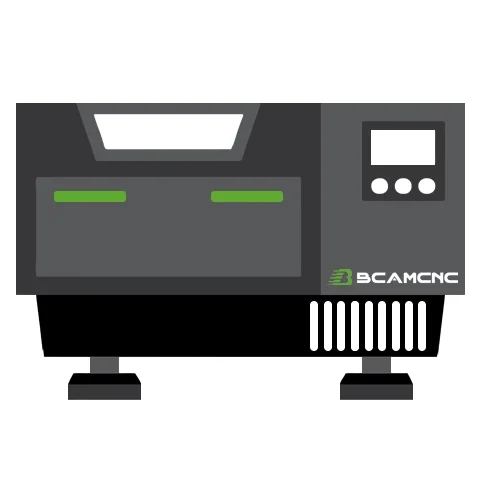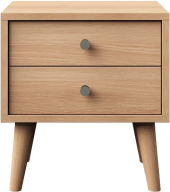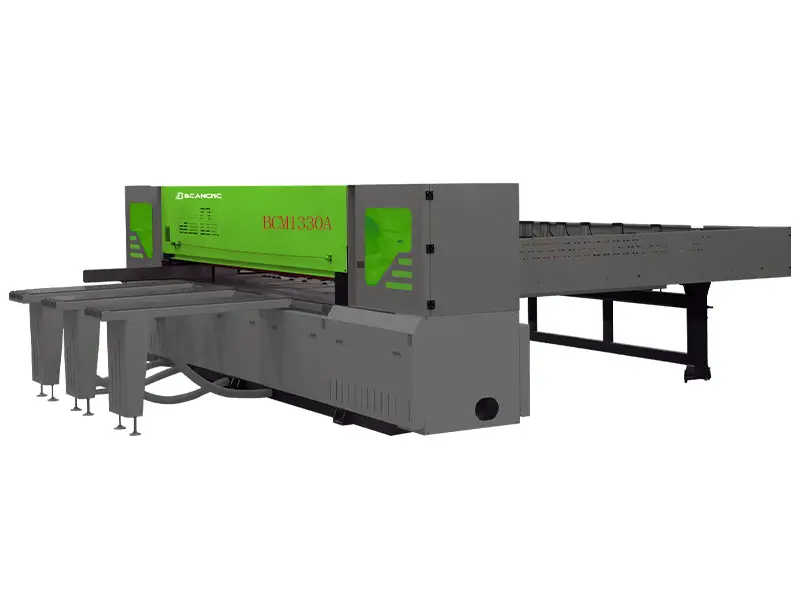Monday To Saturday
8:30 AM - 6:00 PM
Professional Woodworking Cutting Saws for Precision and Efficiency
Beam Saw, Panel Saw & Band Saw for Modern Woodworking
Cutting saws play a crucial role in woodworking, from small workshop projects to large-scale industrial production. Among the most widely used machines are the beam saw, panel saw, and band saw, each designed for different cutting requirements.Beam saws are ideal for high-volume cutting of wood panels, MDF, and laminated boards, offering speed, precision, and automation for cabinet and furniture manufacturing.Panel saws provide accurate straight cuts for sheet materials, with options from vertical panel saws for space-saving workshops to CNC panel saws for digital, programmable cutting.Band saws deliver unmatched versatility, capable of resawing thick lumber, cutting curves, and handling irregular shapes that other saws cannot achieve.Whether you are a furniture maker, cabinet producer, or woodworking hobbyist, choosing the right cutting saw enhances accuracy, efficiency, and overall productivity. Our range of beam saws, panel saws, and band saws ensures reliable performance for every level of woodworking application.
$2,084.00 Original price was: $2,084.00.$1,922.00Current price is: $1,922.00.
$17,890.00 Original price was: $17,890.00.$17,518.00Current price is: $17,518.00.
Explore Advanced Woodworking Cutting Saws: Beam Saw, Panel Saw & Band Saw
Discover professional woodworking cutting saws designed for precision, efficiency, and durability. From beam saws and panel saws for large sheet materials to band saws for versatile curve and resaw cutting, our machines meet the needs of furniture makers, cabinet shops, and industrial woodworking. Whether you need a CNC panel saw for automated production or a compact band saw for workshop projects, we provide reliable solutions to boost productivity and accuracy.

Woodworking has always relied on cutting tools as the foundation of craftsmanship. From shaping raw timber to producing precise furniture components, saws play a central role in every workshop. While hand tools like the traditional rip saw or dovetail saw remain useful for fine details, modern woodworking depends heavily on advanced cutting machines. Among these, the beam saw, panel saw, and band saw stand out as indispensable equipment for both small workshops and industrial furniture factories.
This guide provides a comprehensive look at woodworking cutting saws, with an emphasis on these three powerhouses of efficiency. We will also explore how they compare to other common saws, their applications, benefits, and how to choose the right one for your woodworking needs.
Introduction to Modern Woodworking Cutting Saws
In today’s woodworking industry, speed, precision, and consistency are critical. The demand for high-quality furniture, cabinetry, and interior fittings requires machines that can process wood, MDF, plywood, particle board, and laminates at scale. While table saws and circular saws remain versatile for smaller jobs, larger projects often require industrial solutions like the panel saw and beam saw. Similarly, the band saw continues to be valued for its unique ability to cut curves, resaw thick boards, and process irregular materials.
Each of these saw types offers specific advantages:
- Panel saws excel in cutting sheet goods with straight, clean edges.
- Beam saws bring automation, accuracy, and high production capacity for furniture boards.
- Band saws provide unmatched versatility, from intricate curves to heavy resawing.
Understanding how these machines function and where they fit into woodworking processes is essential for choosing the right setup for your workshop or factory.
Panel Saw: Precision Cutting for Sheet Goods
What is a Panel Saw?
A panel saw is a woodworking machine designed primarily for cutting large sheets of wood-based panels such as MDF, plywood, melamine, and particle board. Unlike handheld circular saws, a panel saw provides stable support for large materials, ensuring accurate and clean cuts.
There are two main types of panel saws:
1.Vertical Panel Saw – Space-saving machines where panels are cut vertically, ideal for smaller workshops.
2.Horizontal Panel Saw (Sliding Panel Saw) – Larger machines where panels are laid flat and cut along sliding tables, preferred in professional cabinet shops.
Applications of Panel Saws
Panel saws are indispensable for:
- Cutting plywood for cabinetry.
- Processing MDF or particle board for furniture.
- Cutting laminated boards for wardrobes and kitchen panels.
- Precision cutting in custom woodworking shops.
For example, a sliding table panel saw allows woodworkers to cut sheet goods with millimeter accuracy, minimizing waste and ensuring perfect joints.
Benefits of Panel Saws
- Precision: Straight, splinter-free cuts with accurate angles.
- Efficiency: Handles large sheets quickly compared to handheld saws.
- Versatility: Works with MDF, chipboard, melamine, plywood, and laminated boards.
- Space Utilization: Vertical panel saws save floor space while delivering professional results.
Modern CNC panel saws elevate this even further by incorporating digital controls, automated feeding systems, and programmable cutting patterns for mass production.
Beam Saw: Industrial Efficiency at Its Best
What is a Beam Saw?
A beam saw is an advanced woodworking cutting machine designed for heavy-duty, high-volume production. Unlike standard panel saws, beam saws operate with a moving blade and pressure beam that holds the panel stack firmly in place, ensuring perfectly straight cuts across multiple sheets simultaneously.
Beam saws are most commonly found in:
- Furniture factories.
- Cabinet production workshops.
- Industrial woodworking lines.
Key Features of Beam Saws
- Pressure Beam: Ensures stability during cutting.
- Automatic Feeding: Panels are automatically positioned for cutting.
- Stack Cutting: Capable of cutting multiple sheets at once, improving throughput.
- Digital Control: CNC systems allow precise programming of cut patterns.
For example, an automatic beam saw for furniture boards can cut large stacks of MDF or laminated panels into exact dimensions, significantly reducing labor time while maximizing consistency.
Applications of Beam Saws
Beam saws are ideal for:
- Cutting cabinet components.
- Processing wardrobe panels.
- Cutting melamine, particle board, MDF, and laminated boards in bulk.
- Large-scale furniture production.
Factories producing hundreds of units daily rely on CNC beam saw machines for their speed and automation.
Benefits of Beam Saws
- High Productivity: Cuts multiple sheets at once, ideal for large orders.
- Accuracy: CNC programming ensures consistent measurements.
- Labor Reduction: Automation reduces manual handling.
- Durability: Heavy-duty construction ensures long service life.
When comparing a panel saw vs. beam saw, the main difference lies in production capacity. While a panel saw suits small to medium shops, a beam saw is designed for high-volume industrial environments.
Band Saw: Versatility in Woodworking
What is a Band Saw?
The band saw is one of the most versatile woodworking machines. It uses a continuous loop blade stretched between two or more wheels, allowing for both straight and curved cuts. Unlike panel saws and beam saws, which specialize in sheet goods, the band saw is suitable for solid wood, logs, and irregular shapes.
Applications of Band Saws
- Resawing thick boards into thinner planks.
- Curve Cutting for decorative shapes and furniture parts.
- Processing Logs into manageable pieces.
- Cutting Veneers for fine woodworking.
With blade sizes ranging from narrow (1/8 inch for curves) to wide (3/4 inch for resawing), the band saw adapts to many woodworking tasks.
Benefits of Band Saws
- Versatility: Cuts curves, straight lines, and thick stock.
- Material Utilization: Thin kerf blades reduce waste.
- Safety: Safer than table saws for irregular cuts.
- Capacity: Capable of handling larger stock than most saws.
For workshops needing flexibility, the band saw is a must-have. Unlike the panel saw and beam saw, which focus on sheet processing, the band saw broadens the range of woodworking possibilities.
Comparing Beam Saw, Panel Saw, and Band Saw
| Feature | Panel Saw | Beam Saw | Band Saw |
|---|---|---|---|
| Primary Use | Cutting sheet goods | Industrial bulk cutting of panels | Curves, resawing, thick stock |
| Precision | High | Very high (CNC automation) | Good (depends on blade/setup) |
| Production Scale | Small to medium shops | Large furniture factories | General workshops |
| Materials | MDF, plywood, laminates | MDF, particle board, laminates | Solid wood, logs, veneers |
| Automation | Manual to CNC options | Highly automated | Mostly manual |
This table shows why woodworking professionals often use these saws together. A beam saw may handle mass production of furniture boards, while a band saw is used for resawing hardwood slabs, and a sliding panel saw is reserved for smaller, precise sheet cuts.
Other Woodworking Saws (Brief Overview)
While our main focus is on beam saws, panel saws, and band saws, other woodworking saws also contribute to efficient production:
- Table Saw – The centerpiece of many workshops, excellent for rip and crosscuts.
- Circular Saw – Portable and versatile for jobsite cutting.
- Miter Saw – Best for angled cuts, trim, and moldings.
- Scroll Saw – For intricate fretwork and delicate details.
- Chainsaw – For rough shaping or breaking down logs.
These tools complement the specialized roles of the panel saw, beam saw, and band saw in woodworking operations.
Choosing the Right Saw for Your Workshop
The choice between a panel saw, beam saw, or band saw depends on your scale of production, budget, and woodworking focus:
- Small Workshops: A sliding panel saw combined with a band saw covers most needs.
- Medium Furniture Shops: Adding a CNC panel saw improves efficiency for cabinetry and custom projects.
- Large Factories: An automatic beam saw is essential for high-volume processing, while band saws handle specialty cuts.
If you primarily work with solid wood, the band saw may be more useful, whereas those specializing in cabinets and furniture boards will benefit from the beam saw or panel saw.
Safety and Maintenance Considerations
Regardless of which saw you use, safety must be the top priority.
- Always wear protective gear (glasses, hearing protection, dust mask).
- Use guards and riving knives where applicable.
- Keep blades sharp to avoid accidents and poor cuts.
Maintenance is also essential:
- Panel saws require alignment checks and blade care.
- Beam saws need lubrication, cleaning, and CNC calibration.
- Band saws require blade tension checks and wheel adjustments.
Regular maintenance not only extends machine life but also ensures accuracy and operator safety.
Conclusion: Building a Complete Saw Setup
Woodworking cutting saws form the backbone of both small workshops and industrial factories. Among them, the panel saw, beam saw, and band saw hold a special place due to their efficiency, precision, and versatility.
- The panel saw delivers clean, accurate cuts for sheet goods.
- The beam saw powers industrial production with automation and speed.
- The band saw offers unmatched versatility for curves, resawing, and irregular stock.
By understanding their strengths and applications, woodworkers can select the right combination of machines to maximize productivity and achieve high-quality results.
Whether you are a hobbyist upgrading your home workshop or a furniture manufacturer looking to scale production, investing in the right cutting saw is essential. The synergy of beam saws, panel saws, and band saws ensures that every woodworking project—from intricate custom furniture to mass-produced cabinetry—can be executed with precision and efficiency.
Secure Payments
Tellus gravida ipsum aut facilisis tempus at et aliquam estsem.
Free Shipping
Non pulvinar aenean ultrices lectus vitae imperdiet vulputate a eu.
Gifts & Sales
Aliquet ullamcorper leo mi vel sit pretium euismod eget libero.
24/7 Support
Nullam iaculis vestibulum arcu id urnain pellentesque volutpat quis.

Important updates waiting for you!
Subscribe and grab 20% OFF!


